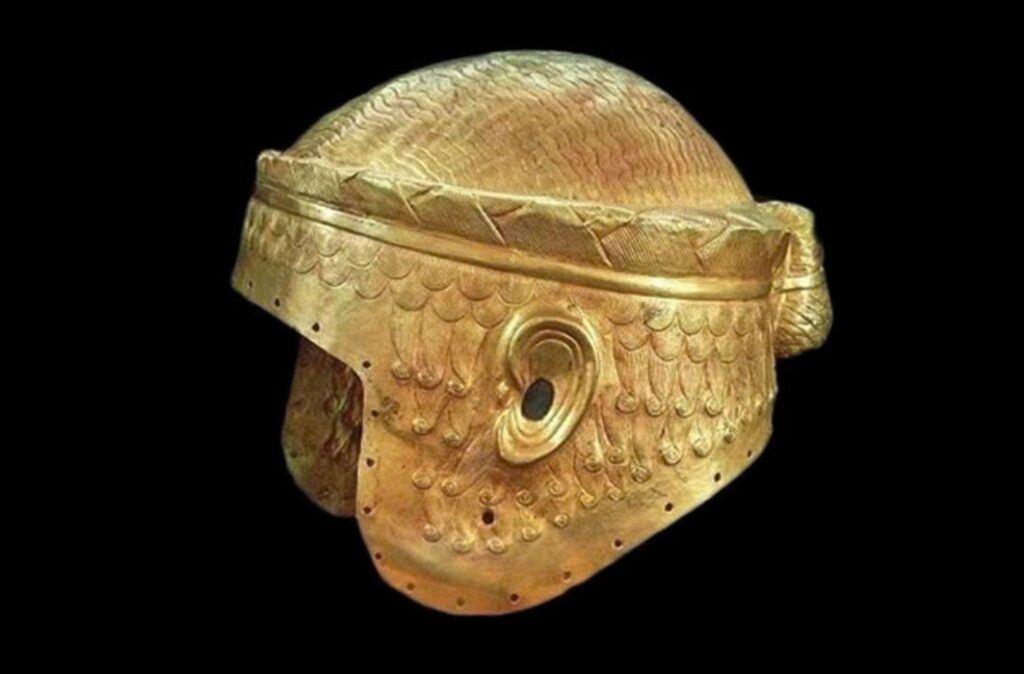A Glittering Discovery in the Royal Cemetery of Ur

In 1924, the sands of ancient Mesopotamia revealed a treasure that would captivate archaeologists and historians for generations to come. British archaeologist Leonard Woolley unearthed a grave in the Royal Cemetery of Ur, designated PG 755, containing the remains of a young, strong-built man surrounded by an array of precious artifacts. Among these treasures was a golden helmet that would become the centerpiece of a fascinating historical puzzle.
The Enigma of Meskalamdug
The grave goods included vessels inscribed with the name “Meskalamdug,” but without a royal title. This discovery sparked a debate about the true identity of the grave’s occupant. Was this the legendary King of Kish, ruler of both Sumer and Akkad, or perhaps his less illustrious grandson who shared the same name?
A Helmet Fit for a King

The golden helmet found in PG 755 is a masterpiece of ancient craftsmanship. Designed to mimic the wearer’s hair, complete with a knotted bun and woven band, it speaks volumes about the status of its owner. Similar helmets were worn by renowned figures like Sargon the Great and Eannatum, both holding the title “King of Kish.”
Decoding the Symbols of Power
The Weight of Gold

The helmet’s material alone suggests royal status, but some scholars argue it signifies more than just royalty. They propose that such helmets were exclusive to the Kings of Kish, rulers of the combined lands of Sumer and Akkad.
Inscriptions and Seals: Pieces of the Puzzle
While the grave itself offered limited clues, inscriptions found in other locations mention a King Meskalamdug. A damaged seal found on the buried man’s belt and inscriptions on artifacts in nearby tombs add layers to the mystery, hinting at a powerful ruler’s legacy.
The Legacy Lives On

Whether the golden helmet belonged to the great King of Kish or his namesake grandson, it remains a powerful symbol of Mesopotamian rulership. This artifact not only showcases the incredible metalworking skills of ancient craftsmen but also provides a tangible link to one of the world’s earliest civilizations.

As we continue to study and admire Meskalamdug’s golden helmet, we gain invaluable insights into the culture, politics, and artistry of ancient Mesopotamia. It stands as a glittering testament to the enduring fascination of archaeological discoveries and their ability to connect us with our distant past.
